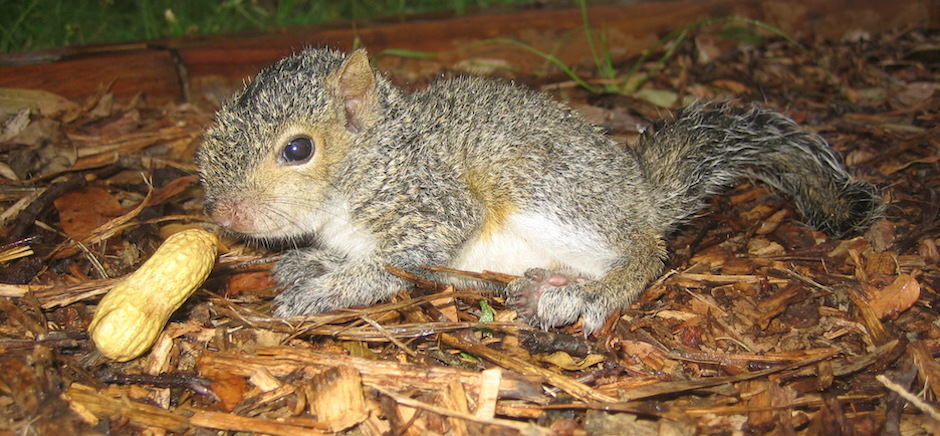How Big is a Squirrel Territory? How Far Do Squirrels Travel From Their Nest or For Food?
In order to survive from one year to the next, an animal must obtain certain things. It must find enough food and water, sufficient shelter and, in most cases find a mate. How readily available these resources are determines how far an animal must travel to find them. Squirrels are known to range over a large area, the size of which varies according to season and habitat type. Squirrels are forest dwellers. They primarily eat nuts and seeds, but will also eat berries, fungus and insects. They horde food in small amounts in several locations when it's abundant. Some caches of seeds are never recovered and instead become seedlings.
Squirrel Territorial Marking
Squirrels are highly territorial and vocal. They are especially noisy during mating season, and they generally breed twice a year. Some species of squirrels may claim as much as 10 hectares of territory. Because of the high density of squirrels in most habitats, there is sometimes significant territory overlap.
Squirrels mark territory with scent and may actively defend that territory in direct interactions. Gray squirrels have two main scent marking tools, urine and scent glands near the mouth. They will frequently urinate as they move along travel routes and they often stop and rub their oral scent glands as well. When two squirrels meet they will greet each other by sniffing these oral scent glands, sometimes placing their hands on the other squirrels shoulders, which gives the appearance of kissing and hugging.
The second main territorial marking method gray squirrels is chewing a large vertical stripe on a large dominant tree in their territory and using this visual marking as a scent marking post. All squirrels passing by this stripe will stop and smell who has been around and add marks of their own. These marks are often maintained for generations

Squirrel Nesting
Squirrels construct their nests out of twigs and leaves, with grass and leaves lining the inside. They will place these nets, known as dreys, along branches or on buildings. Squirrels may have multiple dreys, and may also use holes in tree trunks and stumps as temporary shelters. There are two varieties of drey; one is an open platform just used for sleeping, and the other is a covered shelter used for birthing and raising young. Some varieties of squirrels, such as ground squirrels, may dig burrows or build dreys in low, concealed locations.
Squirrels Search for Food
The squirrels spend a lot of their life on the ground, either seeking food or tending to food. Although considered herbivores and aficionados of nuts, they supplement their diet with a few insects, bird eggs, and even nestlings, mostly while raising their young. They also eat seeds, corn, tree sap, buds, twigs, inner tree bark, fungi, and osage orange and other fruits.
Squirrel Storage of Foods
In late summer and fall, they bury nuts to serve as food stores through the winter. When winter comes, they dig them up, as needed. The nuts aren’t cached all in one spot, and while they probably remember where some are, the squirrels may locate most of them by smell. Another might well have buried the nut one squirrel digs up. It’s through this method of storing nuts that squirrels help to reforest areas, as more nuts are buried than retrieved.
Visit our Wildlife Trapper Dallas home page to learn more about us.

